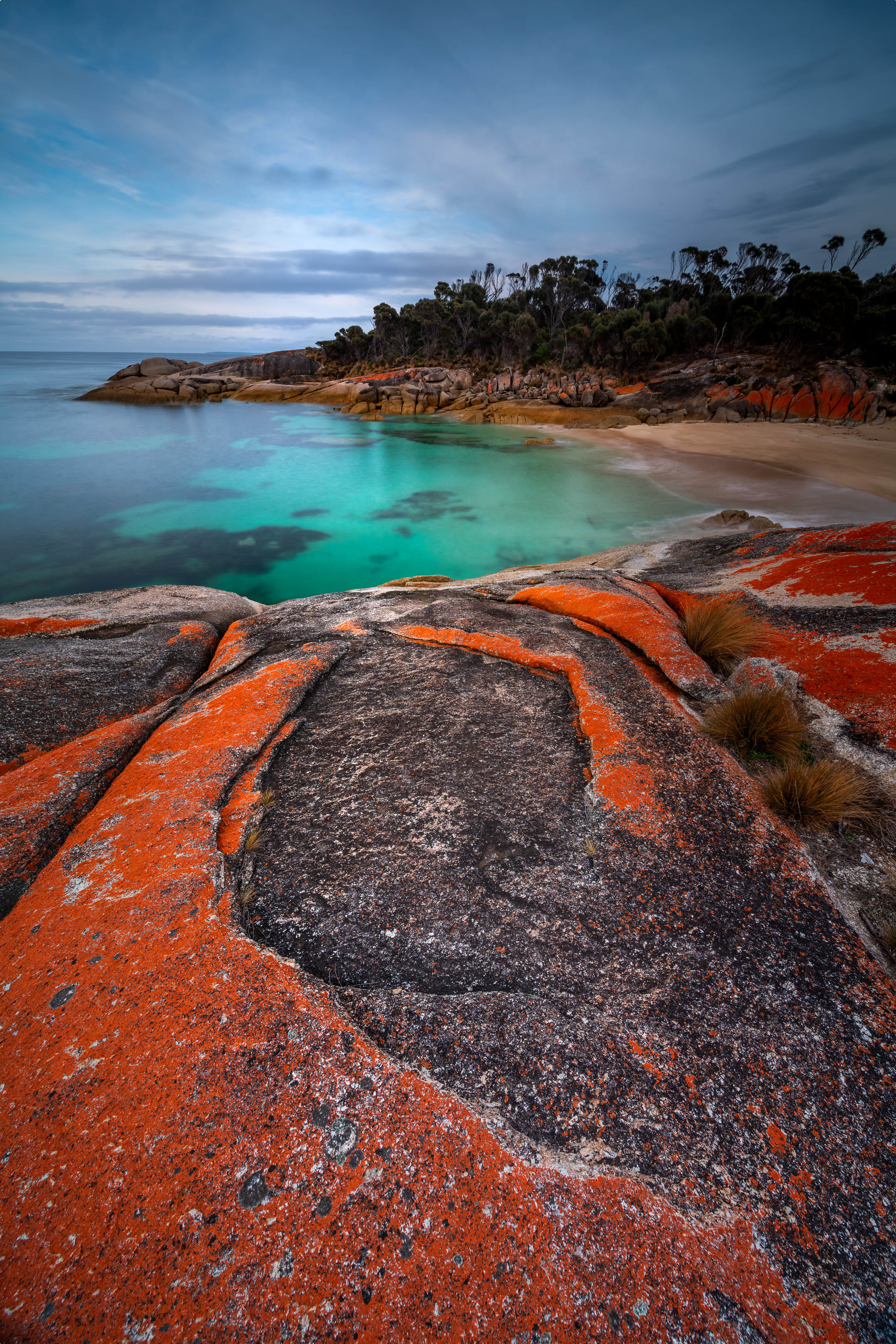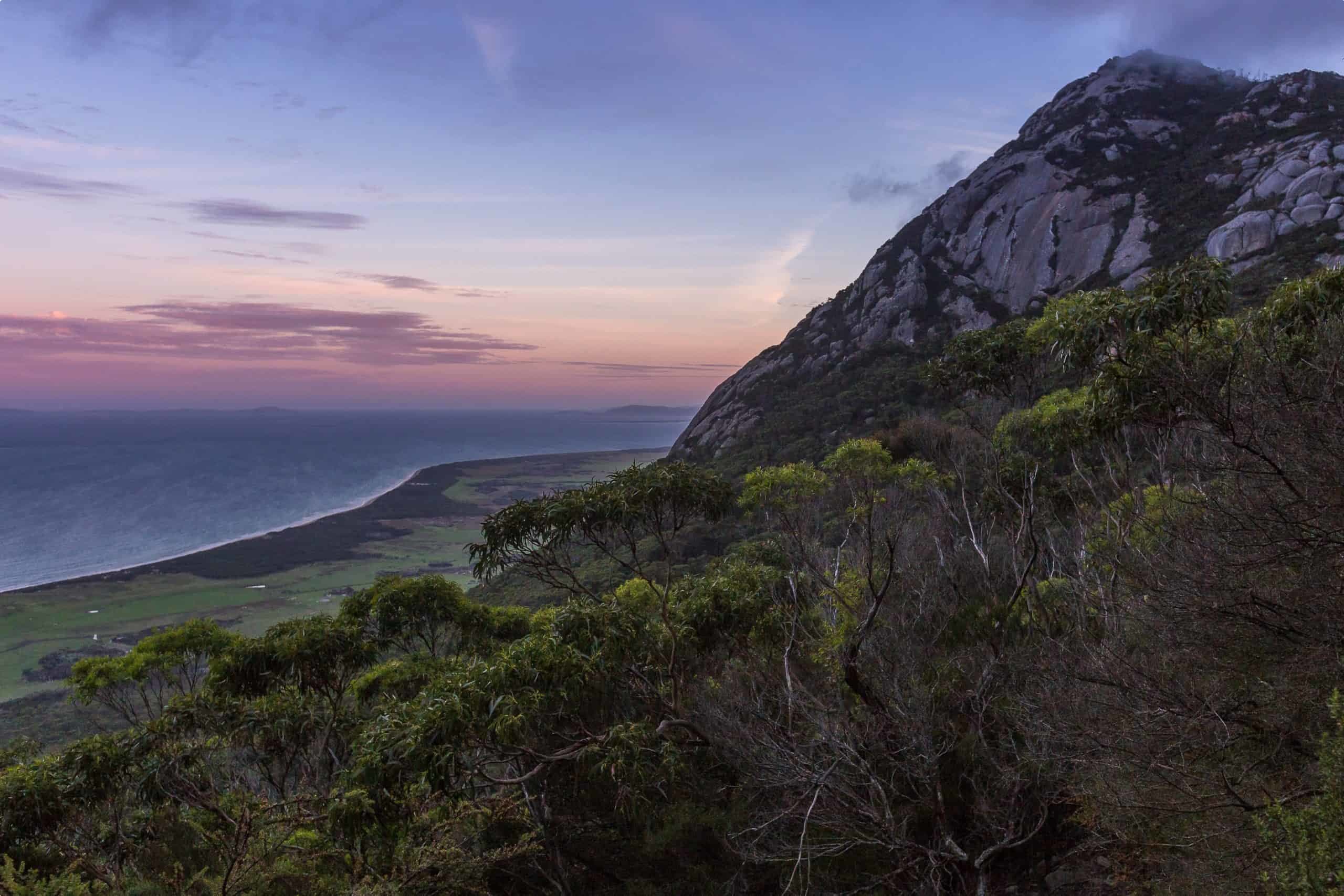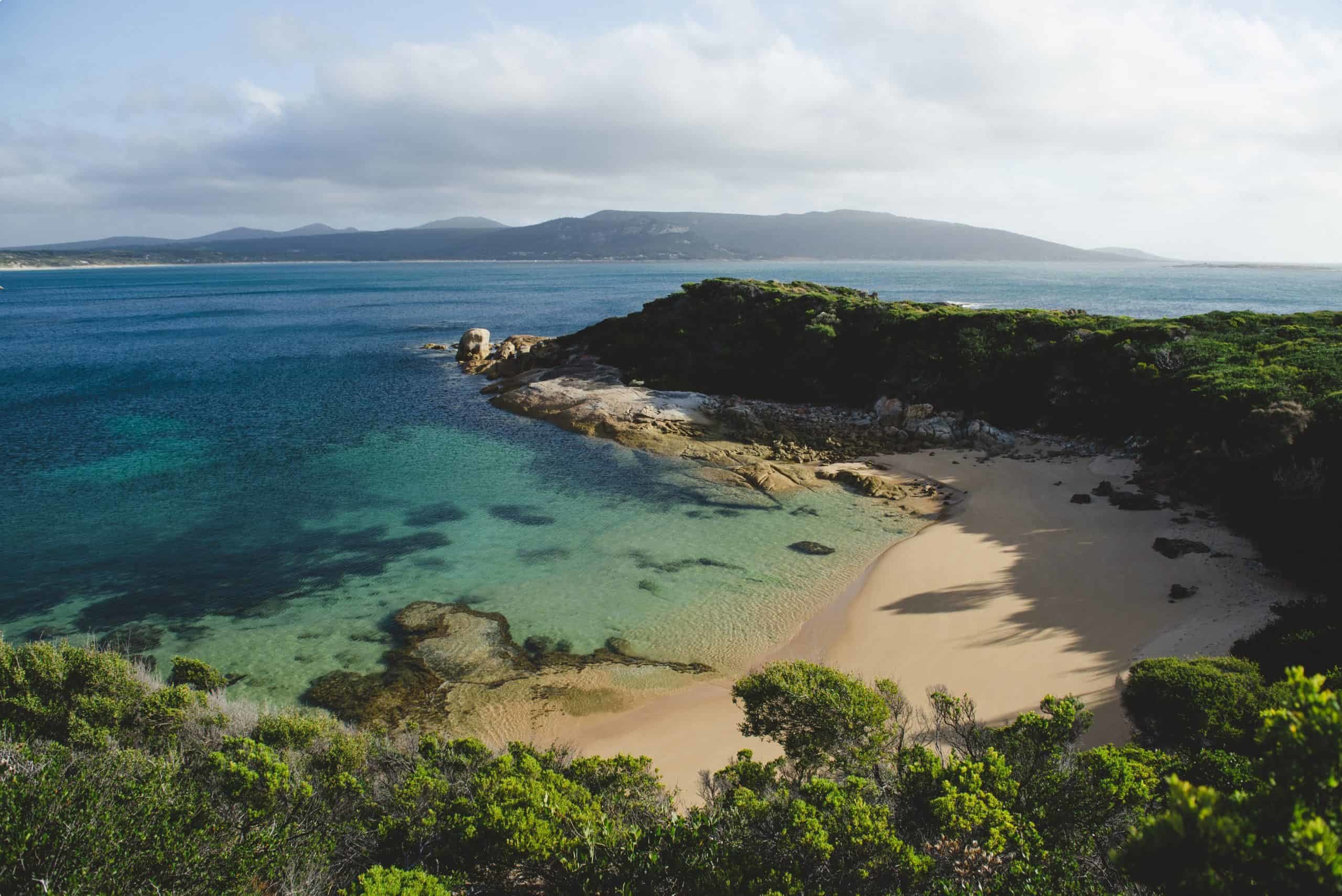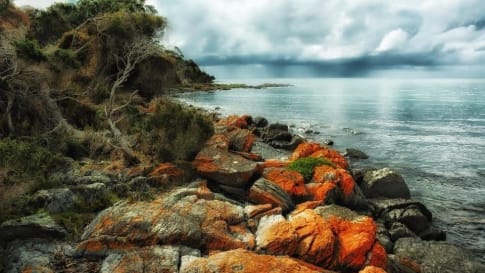Flinders Island, Tasmania
Learn more about this island in the Bass strait as you prepare for week long small group walking tour of the island that begins and ends in Launceston. For fit mature and senior travellers, couples or singles with an interest wildlife and history.
27 May 20 · 6 mins read

Flinders Island, Tasmania
Windswept Flinders Island is Tasmania in a microcosm – granite mountains, beautiful beaches, and abundant wildlife.
Flinders Island is the largest island of the 52 islands of the Furneaux Group, located off Tasmania’s north-east coast. The islands are the remains of the land bridge that connected Tasmania to the Australian mainland, 10,000 years ago. Topographically, the landscapes of the islands resemble those of Tasmania. Granite mountains, the highlands of the bridge, run a disjointed line through the island, draped by plains, heading east to lagoons and west to bays and granite headlands.
The archipelago is located right in the midst of the Roaring Forties, the strong westerly winds famed for bringing ships across the Southern Hemisphere. Few landmasses share this position: South America, New Zealand, and the Flinders and King Islands of the Bass Strait. An average year on Flinders Island brings 67 days of strong winds and 5 of gales.
Though the winds brought seafarers across the Southern Ocean, they also made it a focal point for shipwrecks. Ships struggled to navigate the chain of islands running from Tasmania to Wilsons Promontory. The area is about 60% water and 40% land, with the widest gap only about 20 nautical miles. If you didn’t pick the right passage – among reef, rocks and land – you could easily strike trouble.
Around 120 ships wrecked in these waters, including the first known shipwreck on Australia’s east coast, the Sydney Cove, a merchant ship heading to Sydney from Kolkata, India. The wreck played an important role in Australia’s history: the crew and its rescuers, including 23-year-old Matthew Flinders, reported islands abundant with seals, paving the way for the islands’ settlement by sealers. It was the first settlement south of Sydney and Australia’s export industry, sealskins.
Another notable shipwreck, the Farsund crashed in 1912, at the end of a long journey from Buenos Aires to Sydney. You can now visit the wreck on a boat trip from Flinders Island – look out for dolphins on the way! The wreck somewhat resembles an ‘oversize plant pot’ (Australian Geographic), with shrubs and grasses growing from the rotted deck, attracting cormorants and other sea birds.
Today, the island has a population of just over 800, with only two substantial settlements – Whitemark on the west coast and Lady Barron to the south – leaving most of the island as a virtually untouched natural wilderness. Locals like to say that if you find someone else on the beach, you should head to the next one – only partially a joke on an island with over 100 beaches: a ratio of one beach to every eight people!
Explore Flinders Island with Odyssey Traveller:

Odyssey Traveller is pleased to announce that we are now offering a tour of Flinders Island, with a focus on the island’s many natural wonders. Below, we have listed some of the highlights of our journey:
The main focus of many visitors to the island is Strzelecki National Park. Established in 1967, the national park was named after Polish scientist and explorer Count Paul Edmund Strzelecki in 1972 (who also has the Strzelecki Track and Strzelecki Desert in central Australia named after him). Strzelecki climbed to the summit in 1842. The park centres around the pink and grey granite peak of Mount Strzelecki, the highest point on Flinders Island (visible from mainland Tasmania on a clear day). A climb to the top offers sweeping views of the Furneaux Islands.
Strzelecki National Park offers a range of scenery, with secluded beaches of white sand and turquoise waters, Tasmanian blue gum forest, and coastal heathland. The park offers opportunities for a number of water activities, including swimming, snorkelling, fishing, and kayaking.
The park is uniquely placed at the intersection between the ecosystems of Tasmania and mainland Australia, and you can find flora and fauna from both within the park. Watch out for wombats, Bennett’s wallabies, echidnas, pademelons and long-nosed potoroos. In total, Flinders Island is home to an estimated 200, 000 Bennetts wallabies and Tasmanian pademelons, about 150 per square kilometres. In an overlapping region between Tasmania and the mainland, many endemic Tasmanian species have their northernmost reach on Flinders Island; and some mainland species have a rare Tasmanian foothold.

Picture by Dietmar Kahles
Flinders Island is a paradise for bird lovers, with over 114 species found on the island. Between November and April each year, over eighteen million short-tailed shearwaters (commonly known as the mutton bird) arrive in Tasmania. Their largest colony – with over three million burrows – is Babel Island, off the east coast of Flinders Island. Mutton birds can also be seen from Port Davies, on the west coast of Flinders Island. After breeding in Tasmania, these extraordinary birds head back to the Northern Hemisphere for the boreal summer, travelling all the way to the Aleutian Islands, off the coast of Alaska, before flying down the coast of California and crossing the pacific to get back to Tasmania for the austral summer.
Other birds found on the island include the Cape Barren goose (named for Cape Barren Island, where they were first seen by European settlers) which was hunted almost to extinction in the 1950s, and is still the world’s rarest goose. These geese can drink salt or brackish water, allowing them to live on off-shore islands year round. Around half of Australia’s estimated 30, 000 Cape Barren geese live on the Furneaux Group, nesting on small islands and feasting on the fields of Flinders Island. In the absence of foxes and rabbits, farmers describe them as one of the island’s greatest pests!
Flinders Island is also home to several species of rare or endangered birds, including the colourful swift parrot, the forty-spotted pardalote, one of the smallest and rarest Australian birds, grey-tailed tattlers, and hooded plovers.
Flinders Island also boasts a number of pristine beaches. Sawyers Beach boasts granite rocks, covered in red lichen, and offers good views of Mt Strzelecki. Striking Castle Rock is a massive granite boulder on the beach of Marshall Bay, accessible on the Castle Rock Walk, one of Tasmania’s great short walks. Killiecrankie Bay is a small settlement noted for the abundance of topaz – known as ‘Killiecrankie diamonds’ – which can be easily foraged on a trip to the beach. Palana Beach is noted for huge sand dunes (some reaching up to 50 metres), shaped by the westerly winds of the ‘Roaring Forties’.

Other great seaside spots include the pristine white beaches and clear waters of the North East River, and Trousers Point, a bay within Strzelecki National Park, protected from the impact of the ‘Roaring Forties’.
Flinders Island is also home to a number of important wetland areas, noted for their migratory bird populations. The Logan Lagoon is a coastal wetland on the islands west coast, designated as being of international importance under the RAMSAR convention in 1982. In winter, the wetland is home to black swans, while in summer it is used by migratory birds, including double-banded plovers, while Cape Barren geese can be seen year-round. Cameron’s Inlet on the east coast is a permanent wetland, part open water and part swamp, which also plays host to migratory birds including black swans, ducks, and Cape Barren geese.

Also located on the east side of the island, the Patriarch Wildlife Sanctuary sits between the Middle and South Patriarch, two of three granite boulders – standing like giants on the low surrounding plains – named ‘the Patriarchs’ by Matthew Flinders as he passed the island in 1798-1799. The sanctuary is a haven for endangered wildlife included wombats, Cape Barren geese, and some particularly friendly wallabies.
In spring, Flinders Island is awash with wildflowers, with botanists across the nation coming to see the shy bush and rock orchid, easily accessible via driving tour or walking trail.
Articles about Flinders Island and Tasmania published by Odyssey Traveller:
For all the articles Odyssey Traveller has published for mature aged and senior travellers, click through on this link.
External articles to assist you on your visit to Flinders Island and Tasmania:
- Visit Flinders Island
- Discover Tasmania: Flinders Island
- Flinders Island: Cast Away in Tasmania’s ‘Last Eden’
- Flinders Island hiking: The untapped beauty of Flinders Island
- Strzelecki National Park
- Flinders Island, Tasmania
- Discover Tasmania: Strzelecki National Park
- Flinders Island, TAS
- How and why to get lost on Tassie’s Flinders Island
- Flinders Island
Selected small group package tours

9 days
Mar, Nov, OctSmall group tour of Flinders Island
Visiting Tasmania
Explore and learn about Flinders Island on an escorted small group tour for mature and senior travellers who enjoy a walking holiday. For couples or solo travellers. We also explore Cradle Mountain and Launceston.
From A$6,950 AUD
View Tour
19 days
Mar, Nov, FebDiscovering Tasmania’s Wildlife
Visiting Tasmania
Small group tour of up to 15 mature and seniors travellers visiting and learning about Tasmania's wildlife and history. Visit Maria Island, Freycinet peninsula, Cradle Mountain, Strahan, Lake St Clair and Bruny Island over 16 days.
From A$11,450 AUD
View Tour
days
Mar, Aug, Sep, Oct, Nov +3Tours of Tasmania; exploring colonial history
Visiting Tasmania
Escorted program for couples and single travellers visiting Hobart, Launceston through the Tamar Valley along the rugged coastline of the north coast and heading back south to the pristine wilderness around Cradle Mountain and then on through Strahan, Queenstown and past Lake St Clair, before arriving back in Hobart. This 18 day small group tours to Tasmania for mature and senior travellers interested in the colonial history of Tasmania. We follow the footsteps of the colonists, visiting the churches where they worshipped, the houses in which they lived, the taverns where they drank and some of the mills in which they worked.
Articles about Australia

Australia’s Ocean Frontier: Exploring the Eyre Peninsula, South Australia
Learn about the landscape and the recent settlement of this Peninsula on the South Australian coast. To see and learn more join on the this collection of Australian small group package tours for mature and senior travellers, couples or singles or join the Eyre & York peninsula program.

Cradle Mountain, Tasmania
One of Tasmania's most iconic natural wilderness destinations. Explore Cradle mountain on a seniors small group tour of Tasmania designed for active couples and solo travellers or select another iconic Australian or New Zealand tour.

The Strzelecki Track, South Australia
Strzelecki, made a significant impression on Central, Southern and Eastern Australia for such a short visit. This article continues on that theme, importantly this desert is part of a small group tour for mature and senior travellers that starts and finishes in Broken hill. Just 12 participants, a program suitable for couples and singles. This link shows the portfolio of tours offered in Australia.



